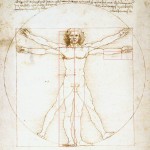 |
| School of Athens - Raphael |
| Linear Perspective |
As depicted in historical pieces of art, Mathematics and Art are not mutually exclusive but part of one entity. They both attempt to represent reality and what we perceive of the world in different forms (in the case of mathematics, using numbers, variables, formulas, and so on).
Carla Farsi, a professor of mathematics as well as an artist, exemplified that mathematical concepts and tools are used in producing art. And as Doris Schattschneider puts its, “art illuminates math” and allows perceivers to visualize and further analyze mathematical concepts such as pattern and symmetry. The two artists/mathematicians reinforce the idea that math and art have a lot more in common that one initially perceives.
 | |
|
Through this week’s material, I have realized that Mathematics may be more formal than Art, but both attempt to formulate the relationships in reality and make sense of or reflect that which we perceive. As history reflects the relationship between arts and science, it is once again brought to light that they influence one another. Due to the discovery of zero, there were significant changes in the mathematical world as well as our culture (as we can witness today).
The education system “de-geniusing” children is a concept introduced in the lecture video, is something I personally was intrigued by. The education system is one of the few things that have not changed over time or “improved”. As someone interested in Cognitive Science, interaction of a user and technology, and the education system, I think there is much room for improvement in educating youth; we can consider different means of conveying educational concepts as opposed to a traditional classroom or requiring a study through various lenses, both in science and the arts.
Sources
Abbott, Edwin. “Flatland: A Romance of Many Dimensions.” N.p., n.d. Web. 26 June 2016.
Freiberger, Marianne. "ART+MATH=X." Plus.maths.org. Plus Magazine, 1 Dec. 2005. Web. 26 June 2016.
Henderson, Linda Dalrymple. “The Fourth Dimension and Non-Euclidean Geometry in Modern Art: Conclusion.” Leonardo. 17.3 (1984): 205-210. Print.
Malkevitch, Joseph. "Mathematics and Art." American Mathematical Society. American Mathematical Society, n.d. Web. 26 June 2016.
Schattschneider, Doris. "Mathematics and Art -- So Many Connections."Mathaware. American Mathematical Society, Apr. 2003. Web. 26 June 2016.
Vesna, Victoria. “Mathematics-pt1-ZeroPerspectiveGoldenMean.mov.” Cole UC online. Youtube, 9 April 2012. Web. 26 June 2016. <http://www.youtube.com/watch?v=mMmq5B1LKDg&feature=player_embedded>